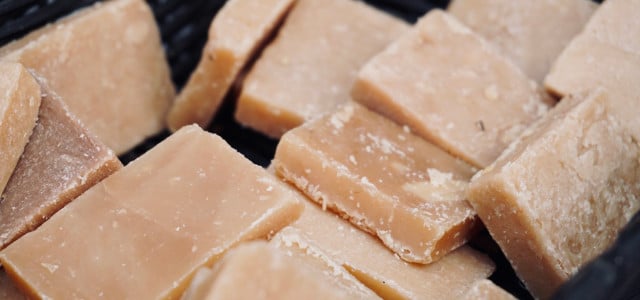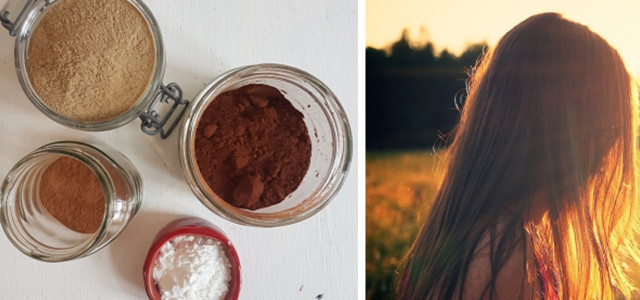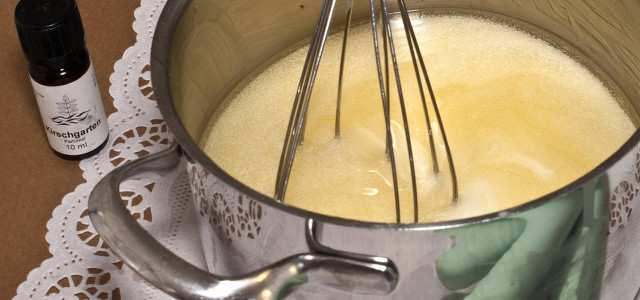With these three recipes homemade soap isn’t hard to make. All you need to create your own DIY soap are a few household ingredients and utensils – and some time and patience.
The basic components of soap are fat molecules – primarily in the form of oils. Soap is the product of a chemical reaction known as “saponification,” a process involving the conversion of a fat or oil into soap and alcohol by way of heat.
This guide will show you three different recipes for homemade soap. Some use hard soap as an ingredient – but you’ll also learn how to make soap completely from scratch.
Soap Recipes with Soap: #1 Coconut Peeling
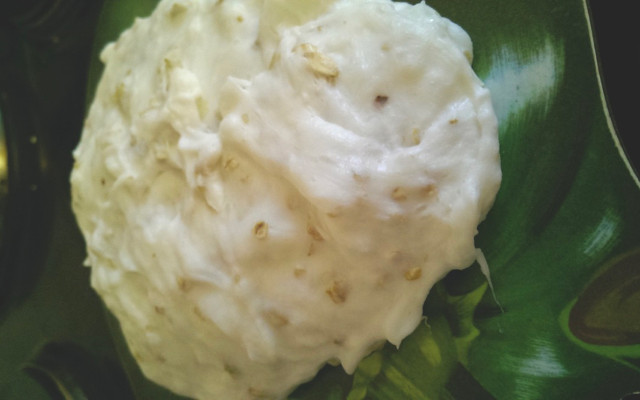
Make this homemade coconut peeling soap with four simple ingredients. If possible, use organic ingredients only – that goes for all of our soap recipes:
- 9 oz. hard soap
- 1/4 cup of coconut cream or coconut oil
- 2 tbsp. coconut milk
- 3 tbsp. oat flakes
In addition to these ingredients, you’ll also need to keep a kitchen grater, a medium sized pot, multiple small baking pans (or one large pan) and a knife handy for this DIY soap recipe.
Utopia’s tip: You may also enjoy our Tutorial: Natural DIY Body Wash for Beginners.
How to make Coconut Peeling:
- Grate the soap bar down into small shavings. This works best with a large kitchen grater.
- Place the soap shavings into a medium sized pot. At low heat, gradually add water and melt the shavings down to a gel-like consistency. This step requires a bit of patience. Melting down the soap shavings can take up to two hours.
- Add the coconut cream and coconut milk to the liquid soap mixture, stir thoroughly. Now work in the oat flakes. Stir everything together thoroughly once more.
- Pour the finished homemade soap mixture into a baking pan. Let it cool and harden completely before removing. You can also roll your soap into small balls – simply wait until the mixture is more shapable after having hardened slightly.
- After your homemade soap has cooled, carefully remove it from the baking pan and cut it into bars using a knife.
That’s it! Read on for more easy soap recipes.
Please note: Soap generally needs a bit of time to “ripen”. Don’t use the soap immediately after cooling. Wait a week or two in order to avoid adverse effects such as skin irritation.
Soap Recipes with Soap: #2 Fruity Orange Soap with Olive Oil
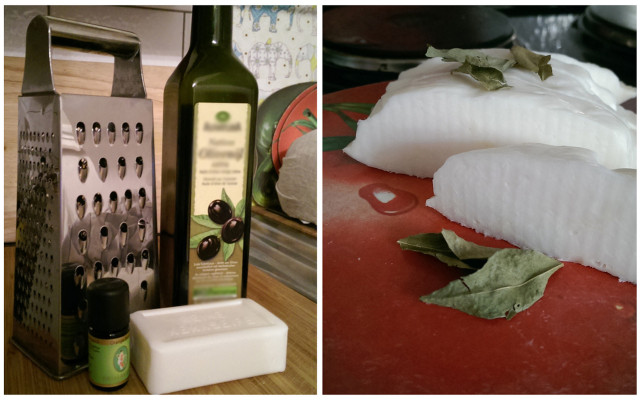


This DIY soap recipe using olive oil is easy as ever and is also great for your skin. You’ll need the following ingredients:
- 9 oz. hard soap
- 1-2 tbsp. of olive oil
- Essential oil: organic orange oil
- Or: bergamot or lemongrass essential oil
- optional: soap dye (the soap will otherwise remain white)
Homemade Orange Olive Oil Soap: The Recipe
- Same as in the first step of the first DIY soap recipe, grate the bar soap into small shavings. Add around half a glass of warm water to the bowl and mix the shavings together by hand. The resulting clump shouldn’t be too firm or watery.
- Add the olive oil and 10 to 15 drops of your favorite essential oil to lend your homemade soap its own unique aroma. If you want, add soap dye.
- Thoroughly mix together once more.
- Grease a small baking pan or similar container and let the finished soap mixture dry for a couple days. Once the soap has hardened slightly, you can also shape it by hand or roll it.
- Once fully hardened, remove and cut into bars and let rest for a week or two.
Be sure to also check out our guide on DIY Dry Shampoo: Homemade Shampoo for Blond, Brunette and Black Hair.
DIY Soap Recipes Without Soap: What to Consider
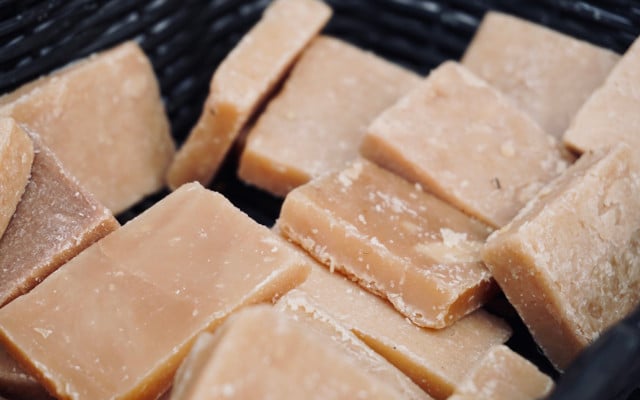


In contrast to the two previous soap recipes which used bar soap as a base, this DIY soap recipe let you create your own soap completely from scratch. However, this is somewhat harder and more time consuming than the previous guides. It’s also not entirely without risks. But your time and effort are worth it.
Please take the following precautionary measures when making your own soap from scratch:
- Wear proper protective clothing: rubber gloves, long sleeves and pants and protective eyewear.
- Wear a filter mask: This guide on how to make soap will have you working with caustic substances, the fumes of which are harmful to your health. Ensure proper ventilation of your workspace.
- Do not use mixing bowls or any other tools made of aluminum. If the soap solution comes into contact with the metal, your homemade soap will be rendered rancid and you’ll have to begin the recipe again.
- The plastic bowls you use to make this soap recipe should no longer be used for any other purpose in the future. Most importantly: avoid any contact with food.
- Make sure neither pets nor children are in close proximity to the area where you will be preparing your homemade soap. The fewer the distractions the better.
- Do not under any circumstance swallow lye you produce for soap recipes as this could be fatal! Keep away from pets and children. Swallowing lye requires immediate medical attention.
#3 The “Quarters” Recipe: Ingredients
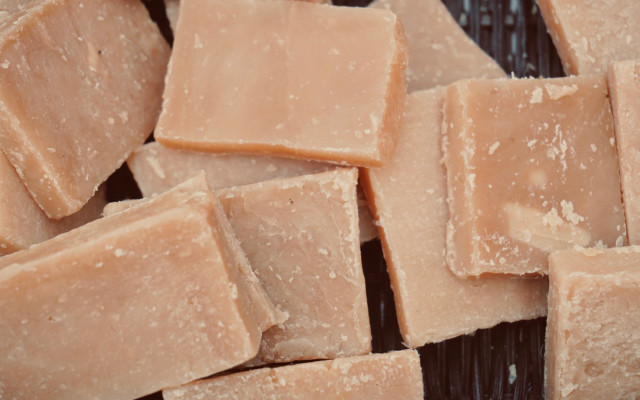


This way to make soap is known as the “quarters” recipe. It gets its name from the ingredient measurements used for the soap: one fourth part of each.
- Most soap recipes contain palm oil as a core ingredient. Palm oil is useful for making soap as it hardens the soap and possesses unique characteristics not present in other common fatty substances. However, for environmental reasons you may want to avoid palm oil. Instead, we recommend shea butter. You should use less than a quarter of this (around 10-15%) and compensate by increasing the olive oil contents of the soap.
- This homemade soap recipe can be adjusted to suit your personal preference – as long as you use the same ratio of liquid and solid fats in order to give your homemade soap the proper consistency.
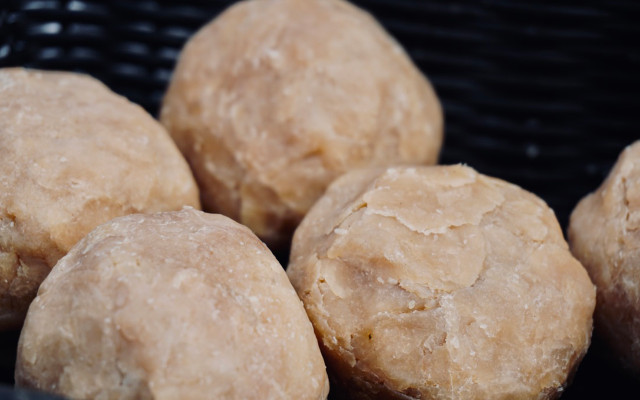


The following ingredient measurements will yield around one pound of soap – more than in previous recipes:
- 25% coconut oil (9 tbsps.)
- 15% shea butter (2,65 oz.)
- 25% canola oil (6/10 cup)
- 35% olive oil (4/5 cup)
- sodium hydroxide (NaOH, also known as lye) for the solution
- water for mixing the solution (approx. 1/3 of soap yield = 7/10 of a cup)
- essential oils of your favorite fragrance (approx. 3% of the total mixture amount)
- optional: soap dye (as preferred), herbs or flowers
The percentage portions of the various fatty substances you will be using is based on the total of soap you wish to produce. If you’re planning on making more than one pound of soap, you’ll have to remeasure.
- You can measure the amount of sodium hydroxide you’ll need for your DIY soap recipe with the help of a lye calculator. This will calculate the exact amount of lye required to convert the specific amount of fats and oils to soap. It also provides you with some additional basic soap making instructions. The lye table (informing you how much lye to use) is divided into excess fat ranges (in percent) your soap will have depending on the amount of lye you use. The most common excess fat range for soaps is 5 – 8%. Ranges from 9 – 10% will create a softer soap that is gentler on the skin due to the amount of excess fat.
- Using the lye calculator: Simply enter the amount of each of your ingredients (e.g. 2,65 oz. of shea butter) into the ingredients table. The calculator will then provide you with a table including your entered ingredient amounts, their percentage content in the recipe as well as the target percentage and the amount of lye required for each excess fat level of your soap.
- The amount of water you’ll need to mix the solution is also based on the total amount of soap you wish to produce. Here it accounts for one third of the recipe – that is, 7/10 of a cup.
The Recipe: How to Make Your Own Soap from Scratch
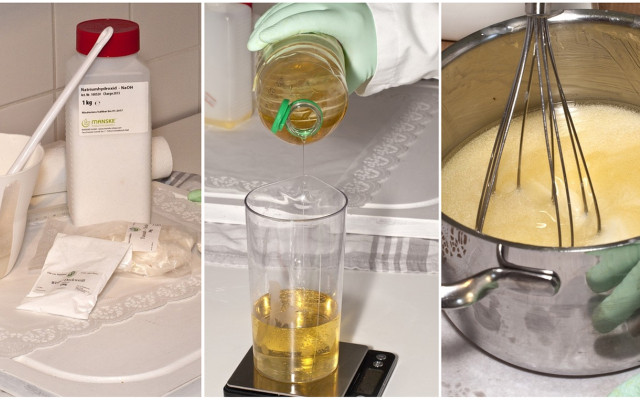


- Gear up with your protective clothing: gloves, protective glasses and long sleeve shirt and pants/apron. Make sure your workspace is ventilated properly – open a window, turn on a fan.
- Weigh out the lye in a small bowl and measure out the correct amount of water for mixing.
- Slowly and gradually add the sodium hydroxide to the water (and not the other way around!). Warning: the mixture can get very hot – even reaching temperatures up to 200°F!
- Once you’ve mixed everything together thoroughly, set the solution aside and let cool.
- Now add the oils and fats (measured to the correct amounts) to a separate pot and melt gradually. Be sure to add the fats with the highest fat contents to the pot first so the liquid fats can lower the temperature.
- Once the pot has reached a temperature of 86°F, carefully mix in the (still warm) soap solution until smooth in consistency. Let cool by straining the solution once more.
- Now you can add the various aromas or coloring to your homemade soap solution.
- In the meantime, line your baking tray or pans with parchment paper. Pour the finished soap solution directly onto your chosen tray or pan mold for hardening.
- Let the soap dry for a couple days, remove from the mold and let rest another four weeks. The longer you let your homemade soap “ripen” before you use it, the milder it will be.
Utopia’s tip: You have tried some of the DIY soap recipes successfully? Then share your soap with others. The homemade soap bars make for great presents! Let them rest for long enough in advance and wrap them up nicely using sustainable gift wrapping! Check out our additional eco-friendly gifts for more green gifting inspiration.
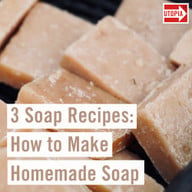


Read more:
- How to Clean Makeup Brushes: DIY Wash Without Special Products
- Sugaring Body Hair Removal at Home: Easy DIY Recipe
- Dry Scalp: These Home Remedies Help Treat an Itchy Scalp
- Homemade Conditioner: Three All-Natural DIY Recipes
This article was translated from German to English by Evan Binford. You can view the original here: Seife selber machen: Anleitung mit natürlichen Zutaten.
** Links to retailers marked with ** or underlined orange are partially partner links: If you buy here, you actively support Utopia.org, because we will receive a small part of the sales proceeds. More info.Do you like this post?






